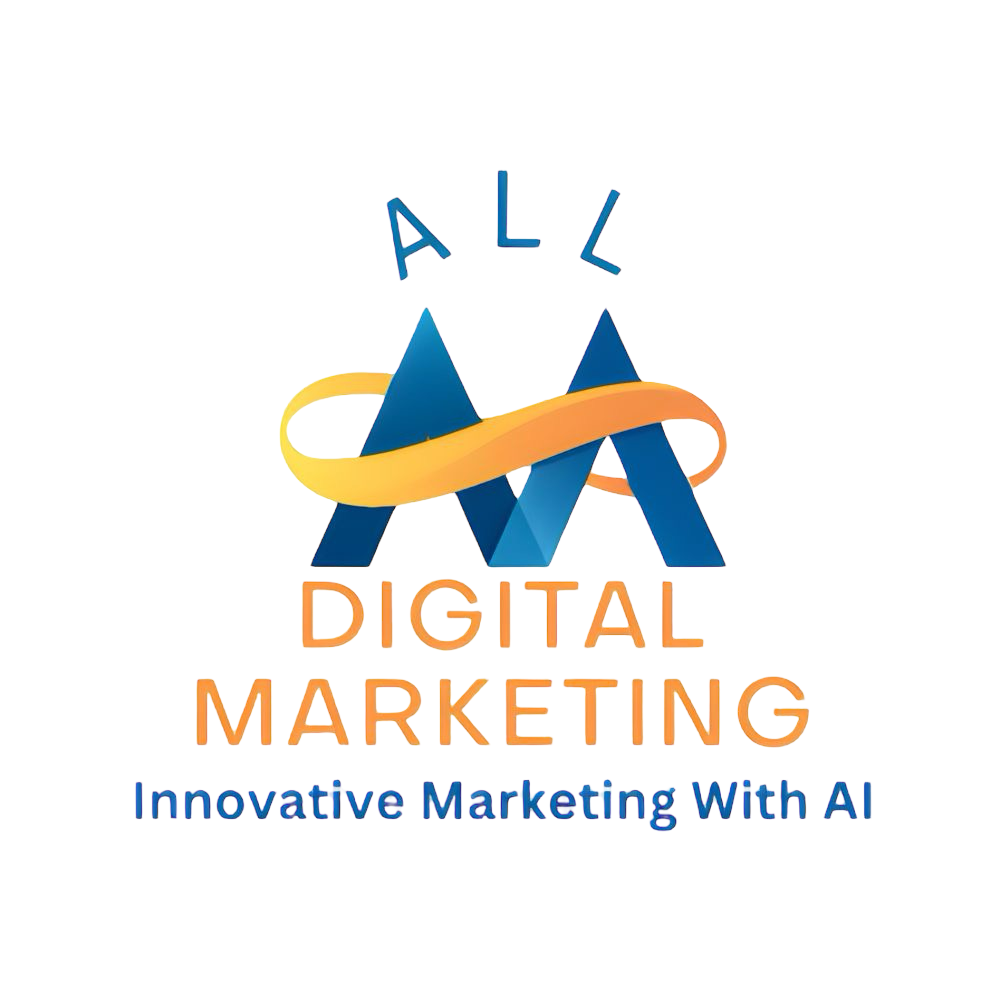Did you know that over 80% of marketers who use predictive analytics, advanced analytics tools, and analytics platforms in digital marketing experience a remarkable increase in their marketing campaign ROI? In today’s fast-paced digital market, simply reacting is no longer enough — the top marketing teams now anticipate what their audience needs, fuelled by the power of data and analytics tools. This guide unlocks the full story behind predictive analytics in digital marketing and shows you how leveraging advanced analytics tools and predictive models can directly amplify your sales, conversion rates, and customer experience. Read on to find out why predictive analytics is a game changer for any brand ready to supercharge its marketing campaigns. Revealing the Power of Predictive Analytics in Digital Marketing: Driving Performance with Data Predictive analytics in digital marketing is revolutionizing how companies approach the marketplace. By uncovering patterns in big data and historical data, marketing teams can make far more informed decisions on where to focus their digital marketing efforts. Imagine running a marketing campaign powered by predictive analytics, machine learning, and advanced analytics tools and platforms that accurately predict what your customers want—even before they know it themselves. This is no longer a distant future, but a practical reality, driven by sophisticated analytics tools and predictive models. The value is real: Companies leveraging predictive analytics in marketing and utilizing the right analytics tools outperform their competitors by 10% in annual sales growth. While over 80% of marketers report seeing tremendous improvements in ROI, less than 30% of businesses fully utilize these advanced analytics platforms. This signals a massive opportunity for marketing teams and business owners to take the lead by implementing predictive marketing strategies grounded in data analytics and artificial intelligence. Over 80% of marketers who implement predictive analytics in digital marketing report significant improvements in campaign ROI. Companies using predictive analytics in marketing outperform their competitors by 10% in annual sales growth. Despite this, less than 30% of businesses fully leverage predictive analytics tools. What Predictive Analytics in Digital Marketing Can Teach You By embracing predictive analytics in digital marketing , you open the door to a world of optimization and targeted growth. The heart of this approach is to anticipate what your audience will do next so you can deliver the right message to the right customer at the right time. With robust analytics tools, marketing teams can segment their audience more precisely, craft tailored marketing campaigns, and boost the conversion rate through personal, data-driven marketing strategies. You’ll learn how predictive models work, the best analytics platforms to use, and how customer segmentation improves not just your targeting, but the overall customer experience. Whether your goal is to maximize ROI, launch high-impact marketing strategies, or simply stay ahead in a crowded digital market, this section delivers powerful, actionable advice. How predictive analytics works in digital marketing The role of analytics tools and platforms Applying predictive models for better marketing campaigns Customer segmentation for targeted marketing Best practices and strategies to boost sales Defining Predictive Analytics in Digital Marketing At its core, predictive analytics in digital marketing refers to the use of data analytics , artificial intelligence, and machine learning to forecast future customer behaviors. By analyzing past and current marketing data, businesses can identify trends, detect hidden insights, and refine their marketing campaigns for maximum effectiveness. Unlike traditional marketing analytics, which looks backward, predictive analytics empowers marketing teams to act ahead of the curve. It involves harvesting big data across multiple channels—including social media, email, and web—to predict what actions customers will take. Machine learning and advanced analytics tools make this possible by creating predictive models that regularly improve as new data points are added. The Mechanics: How Predictive Models Transform Analytics in Marketing Predictive models lie at the heart of predictive analytics in marketing, enabling marketing teams to leverage data analytics and sophisticated analytics platforms for smarter decision-making. These models digest vast amounts of historical data and learning from recurring patterns and customer behavior. By leveraging these insights, marketing teams can better allocate budget, design personalized marketing strategies, and react more quickly to market changes. Add in the constant influx of social media data and evolving customer touchpoints, and you see why predictive models are indispensable in today's digital market. The mechanics work like this: algorithms process marketing data to deliver actionable predictions about customer segments, likely purchase behavior, and emerging trends. As a result, marketing campaigns see measurable boosts in conversion rates—and customers experience higher value through personalization. Machine Learning’s Influence on Predictive Analytics in Digital Market Machine learning is pivotal in making predictive analytics a reality for digital marketing by powering analytics tools, predictive models, and analytics platforms that continuously enhance marketing campaign performance. It automatically detects complex patterns in large datasets, enabling analytics platforms to update predictions as new information flows in. This means that marketing teams do not have to rely on guesswork or dated reports. Instead, they use real-time analytics tools that constantly evolve, ensuring marketing campaigns are always optimized. Through machine learning, predictive analytics in digital marketing delivers recommendations for optimal ad placements, audience targeting, and even the best times to launch a marketing campaign. This data-driven decision-making is what sets modern marketing strategies apart, helping businesses enhance customer experiences and drive better ROI. Comparing Analytics Tools for Predictive Analytics in Marketing Choosing the right analytics tool or analytics platform is crucial for the success of your predictive marketing initiatives and overall digital marketing strategy, ensuring seamless integration and real-time insights. Each tool offers unique features, catering to various business sizes and integration requirements. While some focus on machine learning and automation for large enterprises, others are better suited for small to mid-size brands seeking user behavior tracking and customer segmentation. The most effective analytics platform seamlessly integrates with your existing marketing tech stack—whether it’s email marketing or CRM systems—boosting efficiency and enabling smarter marketing analytics. Evaluating analytics tools based on real-time capability, integration options, and user-friendliness is crucial. Use the comparative table below to find one that aligns with your specific marketing goals and business needs. Features of Leading Analytics Tools for Predictive Analytics Analytics Tool Key Features Best for Integration Tool A Data Visualization, Machine Learning Mid-size brands CRM systems Tool B Real-time Analytics, Automation Large enterprises Ad platforms Tool C User Behavior Tracking, Segmentation SMBs Email marketing Integrating Predictive Analytics Into Your Digital Marketing Strategy Integrating predictive analytics in digital marketing starts with a clear strategy that connects business objectives, analytics tools, analytics platforms, and comprehensive marketing data to optimize your digital market presence. Instead of relying solely on historical data or intuition, you use advanced analytics platforms to forecast trends, optimize spend, and create highly targeted marketing campaigns. The key is to view predictive analytics not as a one-off project, but as an ongoing strategic asset that shapes every aspect of your digital market approach. From email personalization to retargeting ads, predictive analytics in marketing empowers you to anticipate customer needs, tailor offers, and maximize every stage of the customer journey. Using data analytics tools integrated across your marketing stack helps you unify disparate sources, revealing valuable data points you may have otherwise missed. As you refine your predictive analytics approach, it's also essential to ensure your messaging resonates with the right audience segments. For a deeper dive into aligning your brand voice and communication with your target market, explore the strategies outlined in Are You Talking To Your Target Audience? . Step-by-Step: Applying Predictive Models in Marketing Campaigns To apply predictive models in your marketing campaigns , begin by gathering complete, high-quality marketing data. Next, select a suitable analytics platform, train your predictive model using historical campaign and customer data, and launch targeted initiatives based on these insights. Automated feedback loops make it possible to adjust creative, offers, or segmentation as campaigns run, ensuring continuous improvement. Simultaneously, performance metrics help you track ROI, conversion rates, and audience engagement, allowing for further refinement of your predictive marketing strategies. With each iteration, you’ll improve precision targeting, drive greater customer engagement, and enhance the customer experience—all hallmarks of marketing analytics supercharged by predictive analytics. How Data Analytics and Analytics Platform Enhance Predictive Marketing Data analytics and robust analytics platforms sit at the foundation of modern predictive marketing. They make it possible to extract actionable insights from structured and unstructured data, helping marketing teams identify which marketing campaigns are delivering results—and where adjustments are needed. Real-time dashboards reveal emerging patterns, allowing immediate responses to shifting customer behavior and competitor moves. When you synchronize your analytics platform with CRM, social media, and paid ad systems, you unlock a holistic view of every customer touchpoint. This integration is essential for predictive analytics in digital marketing, as it ensures no data point is overlooked and every informed decision is genuinely data-driven. Customer Segmentation: Maximizing Customer Experience and Conversion Predictive analytics excels at customer segmentation —helping marketing teams pinpoint high-value audiences and personalize messaging. By grouping customers based on predicted behaviors, preferences, or likelihood to convert, you can deliver more relevant offers and content through your marketing campaigns. This level of targeting drastically improves both the conversion rate and customer experience, making every marketing effort more efficient. The benefits are clear: Marketing teams achieve better ROI through precision targeting, while customers enjoy a smoother, more engaging digital journey. This approach also allows for dynamic updates as new marketing data becomes available, ensuring your segments stay relevant and effective. Identifying high-value audiences Personalizing messages through predictive models Improving ROI with precision targeting Explore how global brands have transformed their sales and customer engagement by adopting predictive analytics in digital marketing. Real-world case studies reveal the step-by-step process and measurable results, from surging conversion rates to six-figure revenue increases through optimized marketing campaigns. Witness the impact—then use these takeaways for your next campaign. Top Benefits of Using Predictive Analytics in Digital Marketing Choosing predictive analytics isn’t just about adding another analytics tool to your stack—it’s about reimagining how marketing analytics fuels growth. Marketing teams that implement predictive analytics experience a cascade of advantages: pinpointed targeting, skyrocketing conversion rates, deeper customer retention, and substantial returns on marketing investment. It transforms digital marketing from guesswork into precision science, letting you consistently stay ahead of the competition. Precise targeting for marketing campaigns Higher conversion rates with predictive analytics Enhanced customer retention strategies Improved marketing ROI "Predictive analytics is not just about numbers—it’s about anticipating what your customers want and delivering it before they ask." Not all analytics tools are created equal. In this video, see how different analytics platforms stack up for predictive marketing and get practical tips for matching the right tool to your digital marketing needs, from CRM integration to budget to feature set. Predictive Analytics in Marketing Campaigns: Step-by-Step Implementation Guide Implementing predictive analytics in marketing campaigns is a structured process involving careful data collection, smart predictive model selection, and ongoing optimization using the best analytics platforms. First, marketing teams must gather and cleanse marketing data, choosing an analytics platform capable of robust machine learning and reporting. Once predictive models are trained on historical data, teams deploy targeted campaigns, using real-time feedback to continuously refine tactics and maximize conversion rates. The secret is not to treat predictive analytics as a “set-and-forget” initiative. Continuous measurement and optimization, powered by new insights and feedback, ensure your marketing strategies always evolve ahead of the digital market curve. Harnessing Predictive Analytic Models for Marketing Analytics Data Collection & Preparation Model Selection & Training Campaign Deployment Performance Measurement & Optimization Case Study: Elevating Marketing Campaigns with Predictive Analytics in Marketing Take the case of a mid-size retailer struggling to improve sales with traditional digital marketing tactics. By adopting predictive analytics, their marketing team used customer segmentation and predictive models to identify the segments most likely to purchase during holiday campaigns. The result? A 25% jump in conversion rates and a 15% lift in overall revenue—proving the tangible value predictive analytics brings to marketing campaigns across industries. Another example is a SaaS provider who unified big data from multiple social media platforms and email campaigns using an advanced analytics tool. This enabled them to anticipate customer churn and trigger personalized retention offers, resulting in higher engagement and a longer customer lifetime value. Best Practices for Predictive Analytics in Digital Marketing Predictive analytics in digital marketing thrives on best practices. Marketing teams should regularly update predictive models with the latest data to boost accuracy, integrate multiple analytics tools for a 360-degree view, and commit to persistent testing and optimization. These steps maximize results and ensure every marketing campaign is rooted in meaningful, up-to-date insights. Regularly update predictive models using new data Integrate multiple analytics tools for comprehensive insights Test, analyze, and optimize continuously Common Challenges When Implementing Predictive Analytics in Marketing While the benefits of predictive analytics in digital marketing are significant, challenges remain. Common hurdles include data quality issues, system integration headaches, and regulatory concerns around customer experience data. By proactively addressing these obstacles, marketing teams can unleash the full potential of predictive analytics and stay agile amid changing digital market conditions. Overcoming Data Quality Hurdles in Digital Market Analysis Even the most sophisticated predictive analytics models depend on clean, reliable data. Inconsistent or incomplete data sources can derail your strategy, leading to skewed predictions and missed opportunities. That’s why data science best practices—such as regular cleaning, validation, and standardization of marketing data—are crucial for trustworthy analytics in marketing. Addressing Integration with Existing Analytics Platforms Integrating predictive analytics with current analytics tools and platforms is often complex. Systems may lack compatibility, or vital data points might be trapped in silos. To overcome these barriers, invest in analytics tools designed for flexibility and open APIs, and ensure your IT team is trained to manage seamless data flows across your marketing ecosystem. When integration is smooth, marketing teams benefit from a unified dashboard, providing a holistic view of all marketing campaigns and letting informed decisions happen faster and more accurately. Ensuring Compliance in Customer Experience Data Usage As customer data privacy regulations intensify, compliance in customer experience analysis is top priority. Marketers must ensure all uses of predictive analytics meet regional and international guidelines (like GDPR or CCPA). This means securing explicit consent for data collection, using only approved analytics tools, and maintaining transparent privacy documentation. Teams should work with legal and data protection experts to create privacy-first predictive marketing strategies that build customer trust and safeguard both the business and its customers. The future of predictive analytics in digital marketing is bright—think hyper-personalization, AI-powered chatbots, and seamless omnichannel campaigns. This video spotlights the emerging trends and tech transforming how marketing teams will approach analytics, segmentation, and real-time customer engagement in the coming years. People Also Ask: How is analytics used in digital marketing? How analytics in digital marketing empowers data-driven decision making Analytics in digital marketing analyzes marketing data from various touchpoints to reveal what’s working and what needs adjustment. This empowers marketing teams to make data-driven decisions, focus on high-value audiences, and personalize their approach based on real-time insights. Ultimately, using analytics tools enables teams to maximize ROI, optimize marketing campaigns, and gain a much deeper understanding of the customer experience. People Also Ask: What are examples of predictive analytics? Use Cases: Predictive Models in Marketing Campaign Strategies There are many real-world examples of predictive analytics in digital marketing. Retail brands apply predictive models to forecast seasonal buying trends, allowing them to optimize inventory and run timely marketing campaigns. Subscription services use predictive analytics to spot customers likely to churn, sending targeted retention offers before a customer downgrades or cancels. Social media platforms employ predictive analytics to suggest relevant ads or content, improving both conversion rates and customer experience. Each example highlights how predictive analytics not only boosts efficiency for businesses but also delivers more value and personalization to customers throughout the digital market. People Also Ask: Why would a marketer use predictive analytics? Enhancing Marketing Analytics to Boost Sales and Customer Engagement Marketers use predictive analytics and marketing analytics tools to achieve one main goal: boosting results. Whether that’s higher sales, increased engagement, or lower churn, predictive analytics in digital marketing helps identify where to invest, which offers to send, and who your most valuable customers are. With detailed marketing analytics, teams can move quickly, test new ideas, and deliver what customers want, when they want it. The edge is clear: Marketers using predictive analytics see better conversion rates and happier, more loyal customers. People Also Ask: What are the three types of predictive analysis? Breakdown: Classification, Regression, and Clustering in Digital Marketing Predictive analytics in digital marketing relies on three main types: classification , regression , and clustering . Classification predicts categories (like labeling leads as “hot” or “cold”), regression predicts continuous outcomes (such as future sales or click-through rates), and clustering groups similar customers for more effective segmentation. Understanding these approaches helps marketers design stronger, more predictive marketing campaigns tailored to specific business goals. Expert Tips and Strategic Insights for Predictive Analytics in Digital Marketing Continuously refine data collection processes Leverage advanced analytics tools for better outcomes Train your team to interpret and act on predictive analytics outputs Frequently Asked Questions on Predictive Analytics in Digital Marketing What is the ROI of predictive analytics in marketing? Predictive analytics in marketing consistently delivers strong ROI by improving targeting, increasing conversion rates, and lowering wasted ad spend. Marketers often see a 10-20% lift in results when optimizing campaigns with predictive models. How quickly can predictive analytics impact digital marketing campaigns? Results often appear in as little as a few weeks for targeted campaigns. Full benefits come as predictive models refine over time with new data. Which marketing campaigns benefit most from predictive analytics? Campaigns that rely on personalization, audience segmentation, or dynamic offers see the biggest lift from predictive analytics in digital marketing. What analytics tools are recommended for predictive analytics in digital marketing? Leading tools include those with machine learning capabilities, real-time dashboards, and seamless integration—like Tool A, Tool B, or Tool C featured above (see tools comparison). Summary: Key Takeaways from Predictive Analytics in Digital Marketing Predictive analytics strengthens digital marketing by improving targeting and personalization Effective use of analytics tools and platforms boosts campaign performance Investing in predictive models leads to long-term sales growth Ready to Amplify Sales With Predictive Analytics in Digital Marketing? Contact Our Analytics Experts for Your Next Marketing Campaign Call us at 207-710-1449 for all your marketing needs. Let us get your business more visibility. If you’re inspired to take your digital marketing to the next level, consider how a comprehensive content audit can further enhance your predictive analytics strategy. By evaluating and optimizing your website’s content, you’ll ensure that every touchpoint is primed for engagement and conversion—maximizing the impact of your data-driven campaigns. Discover actionable steps and expert guidance in Transform Your Website: The Ultimate Content Audit Guide . This resource is your next step toward building a high-performing digital presence that works seamlessly with advanced analytics for sustained growth. Predictive analytics in digital marketing leverages data analysis and machine learning to forecast future customer behaviors, enabling marketers to craft more effective campaigns. By analyzing historical data, businesses can anticipate trends, optimize resource allocation, and enhance customer engagement. For a comprehensive understanding of how predictive analytics can transform your marketing strategies, consider exploring the following resources: “How to Use Predictive Analytics in Data-Driven Marketing” : This article delves into the role of predictive analytics in marketing, discussing its importance, measurement models, and practical applications. It provides insights into how businesses can leverage past data to predict marketing trends and optimize strategies. ( marketingevolution.com ) “Predictive Analytics in Marketing: How to Use it to Drive Success” : This resource explores the significance of predictive analytics in marketing, highlighting how it enables data-driven decision-making and enhances campaign effectiveness. It offers practical advice on implementing predictive analytics to achieve marketing success. ( techtarget.com ) By integrating predictive analytics into your digital marketing efforts, you can anticipate customer needs, tailor your campaigns more precisely, and ultimately drive higher sales and customer satisfaction.

 Add Row
Add Row  Add
Add 







